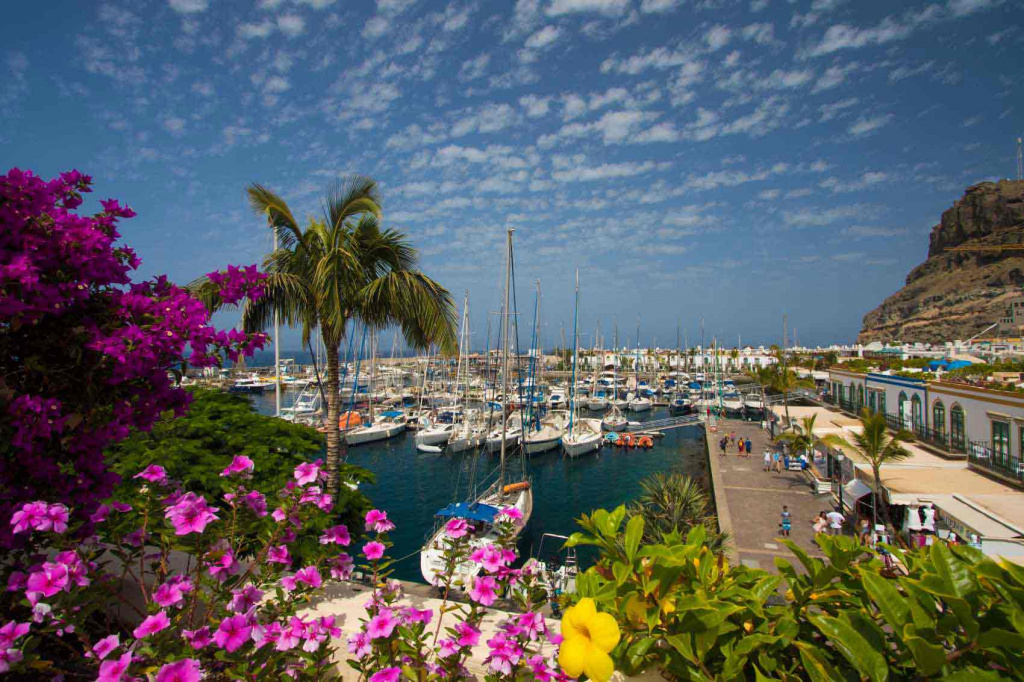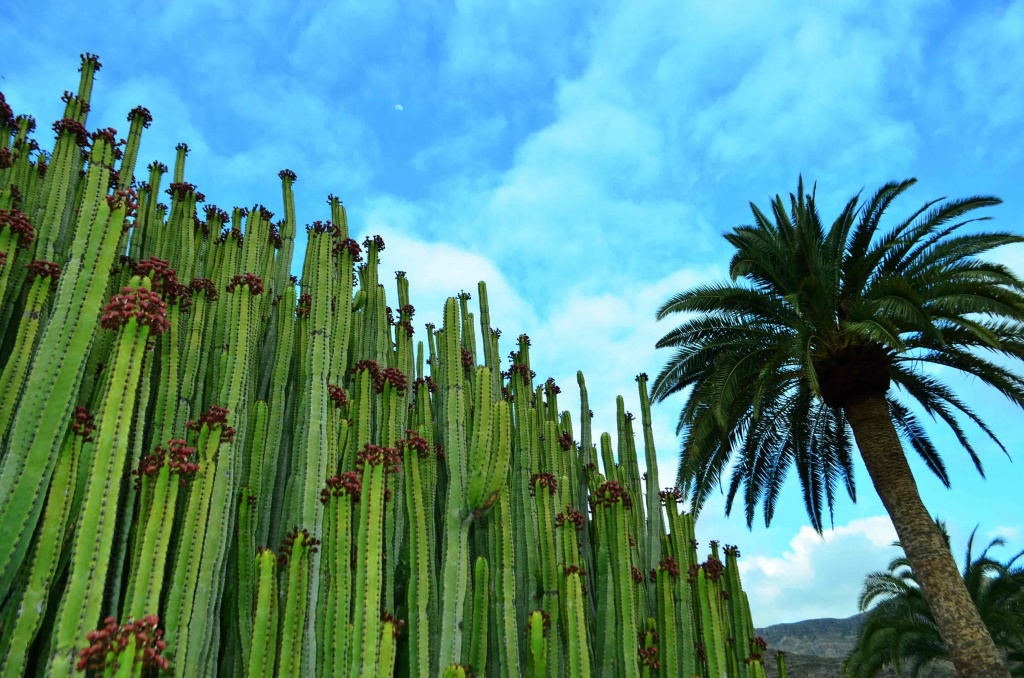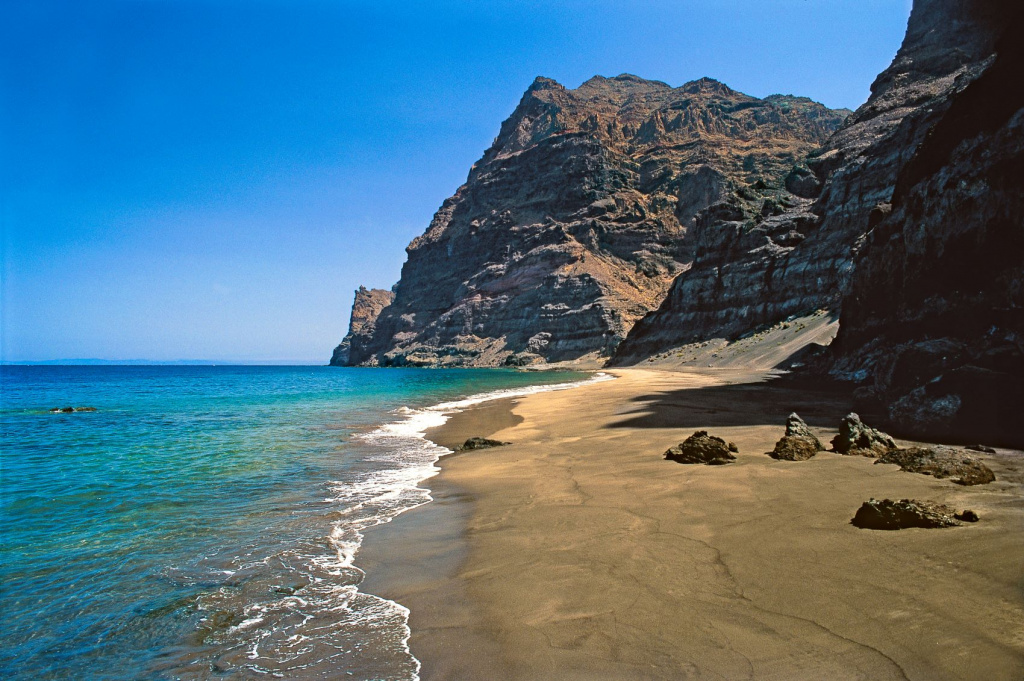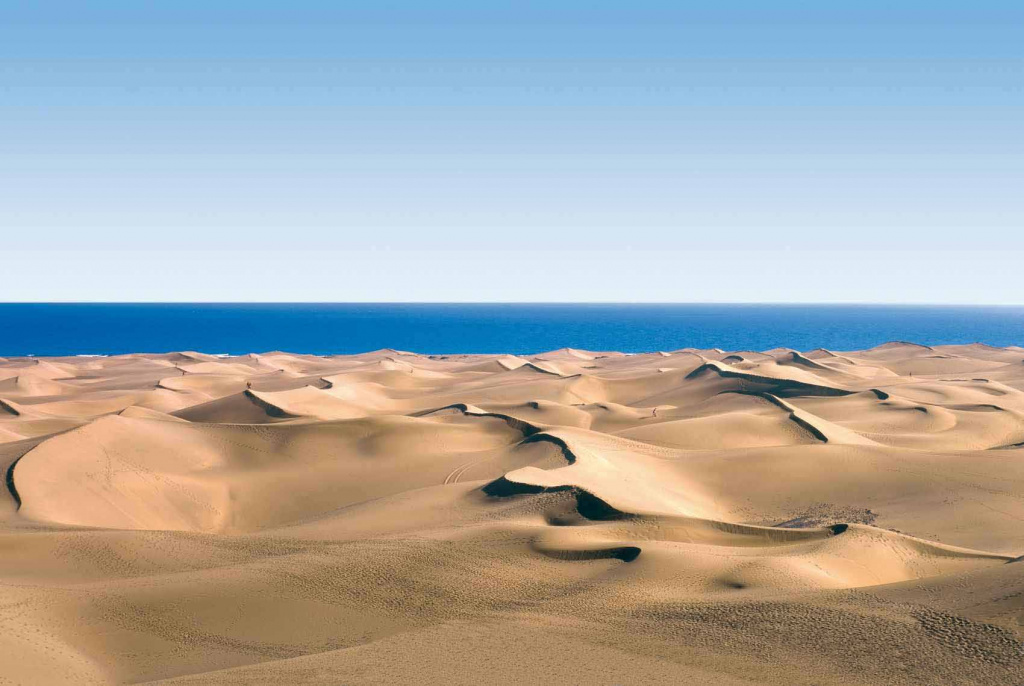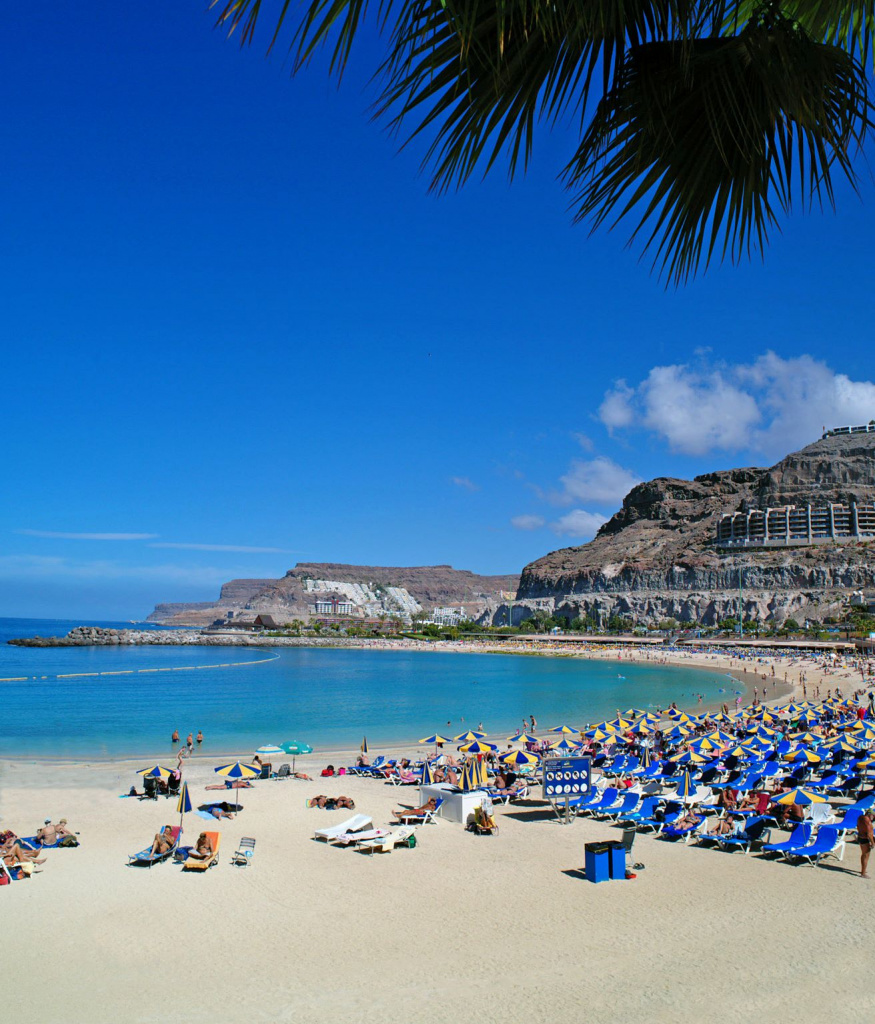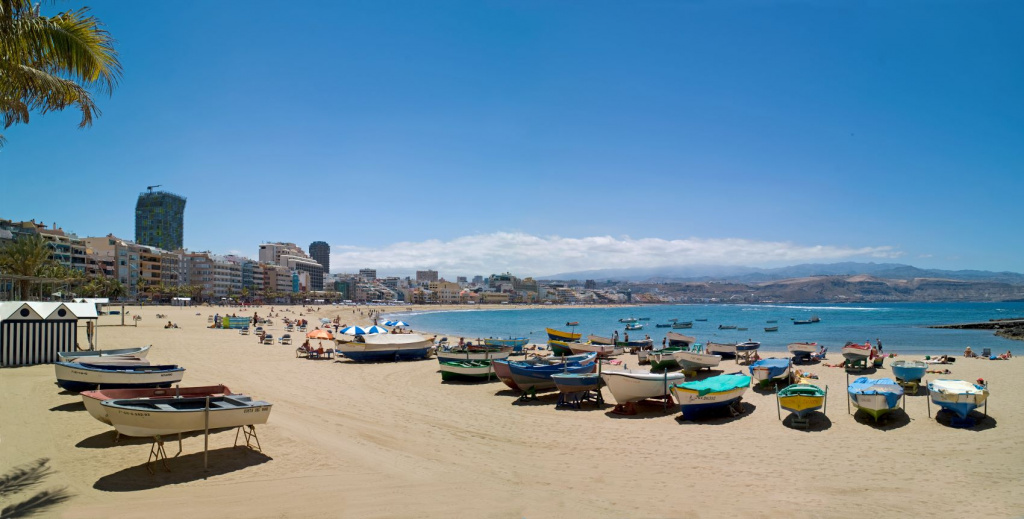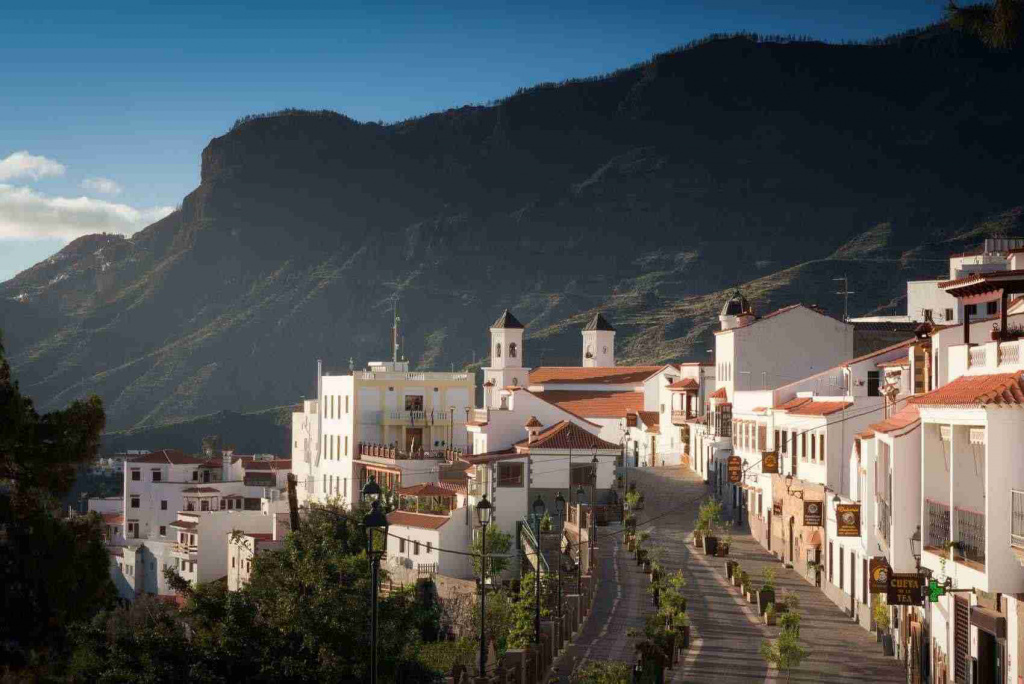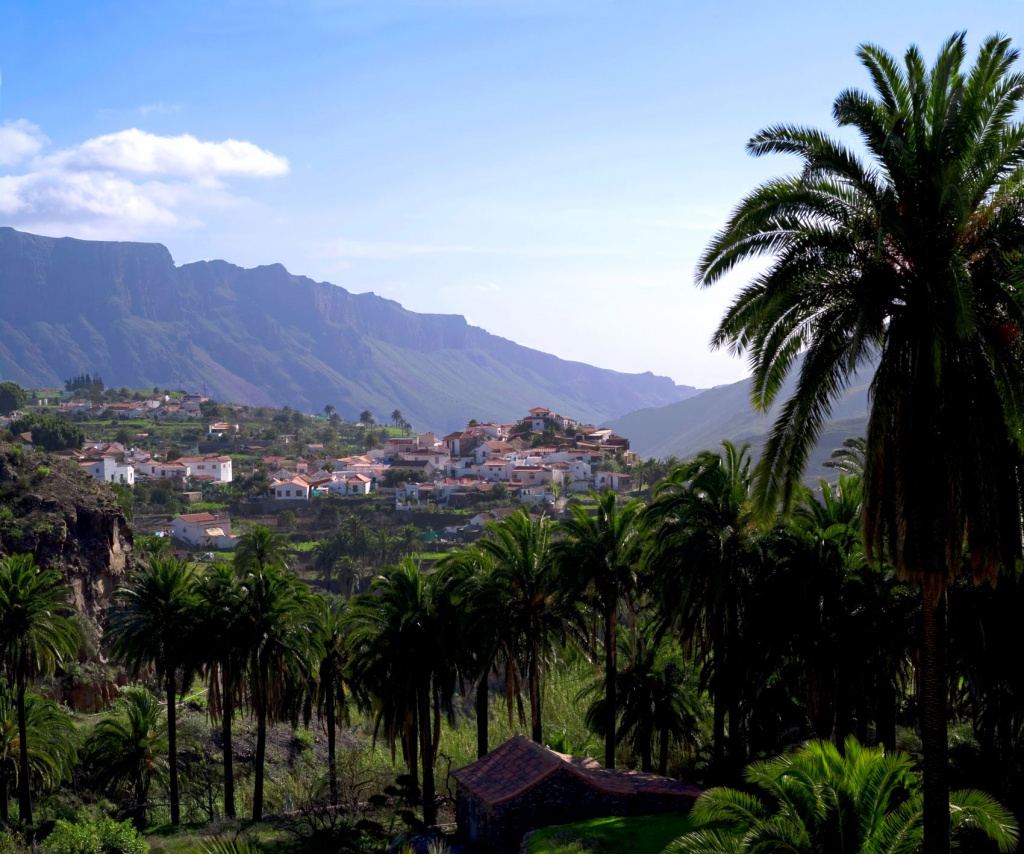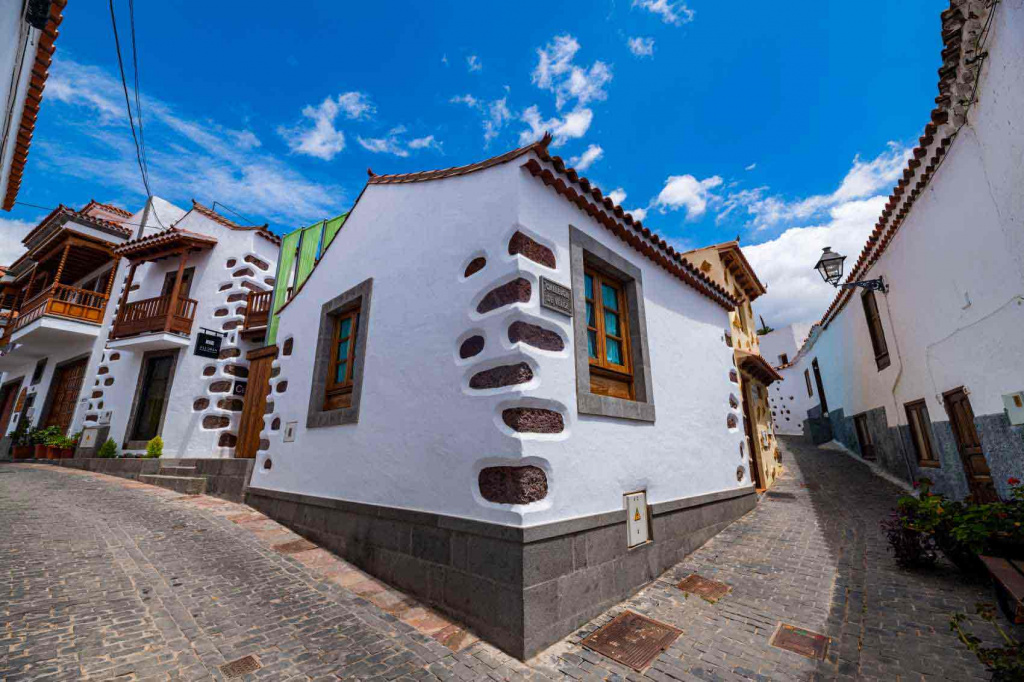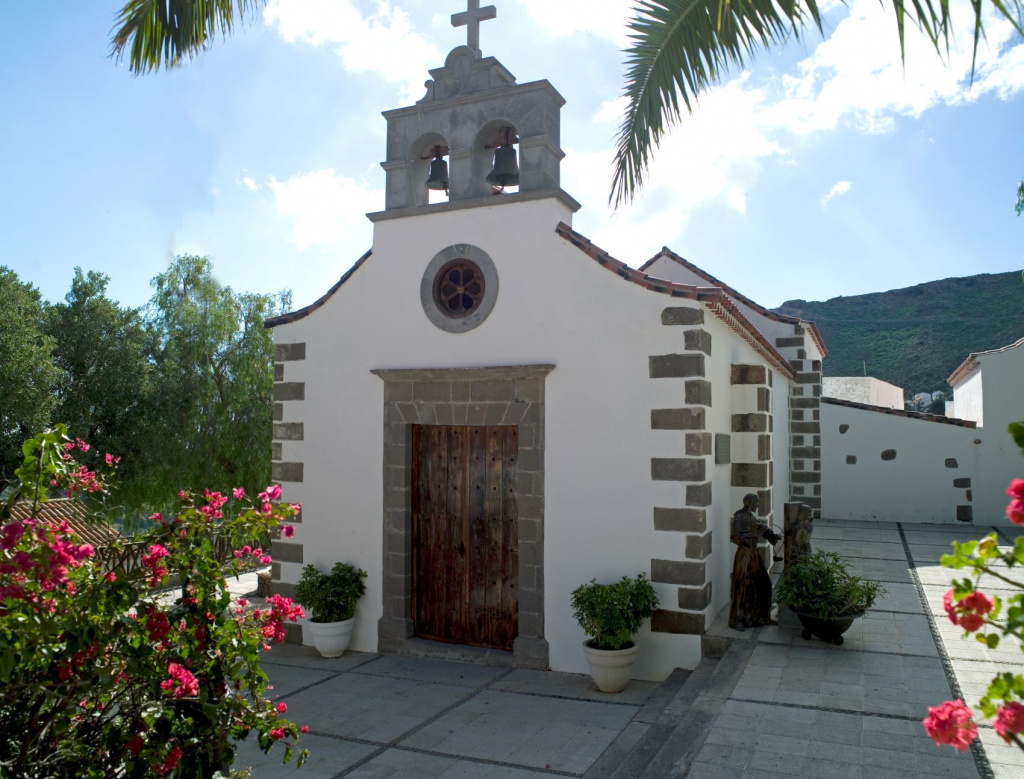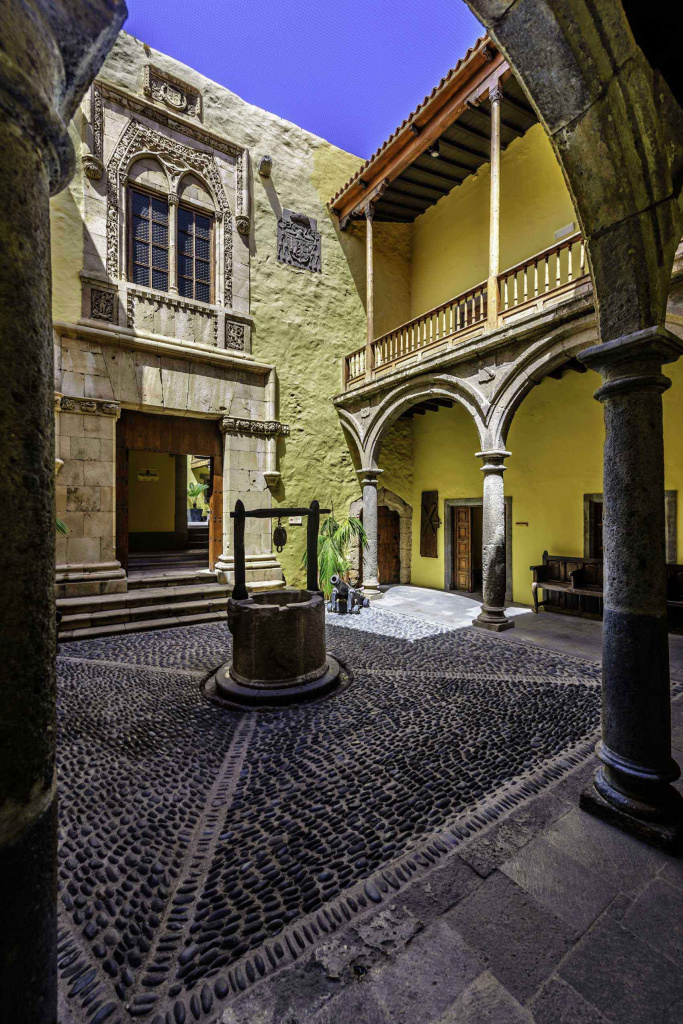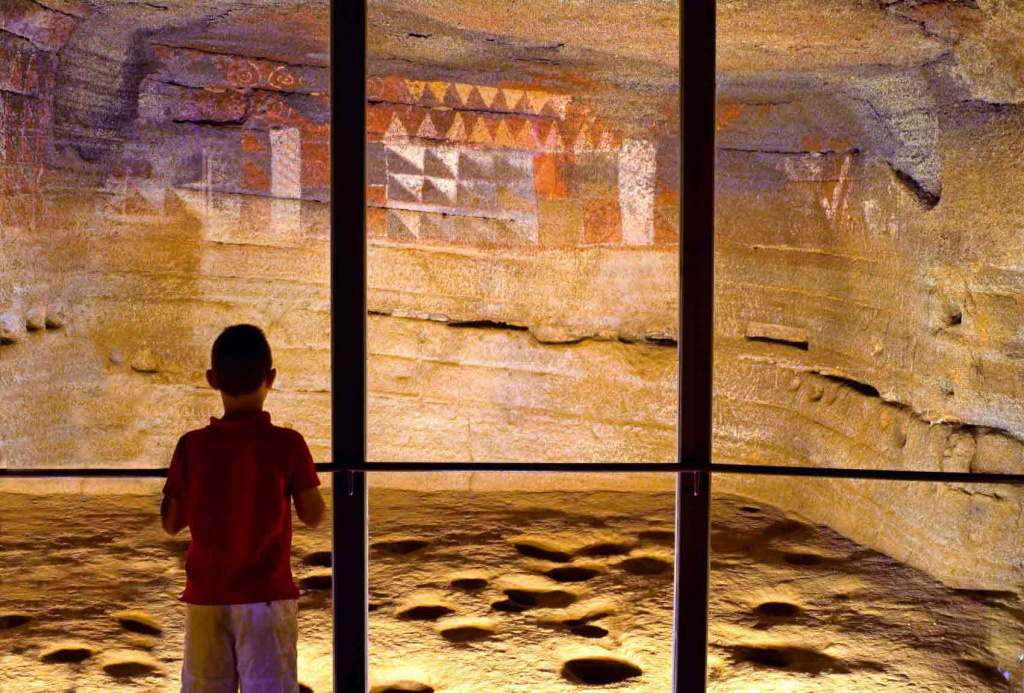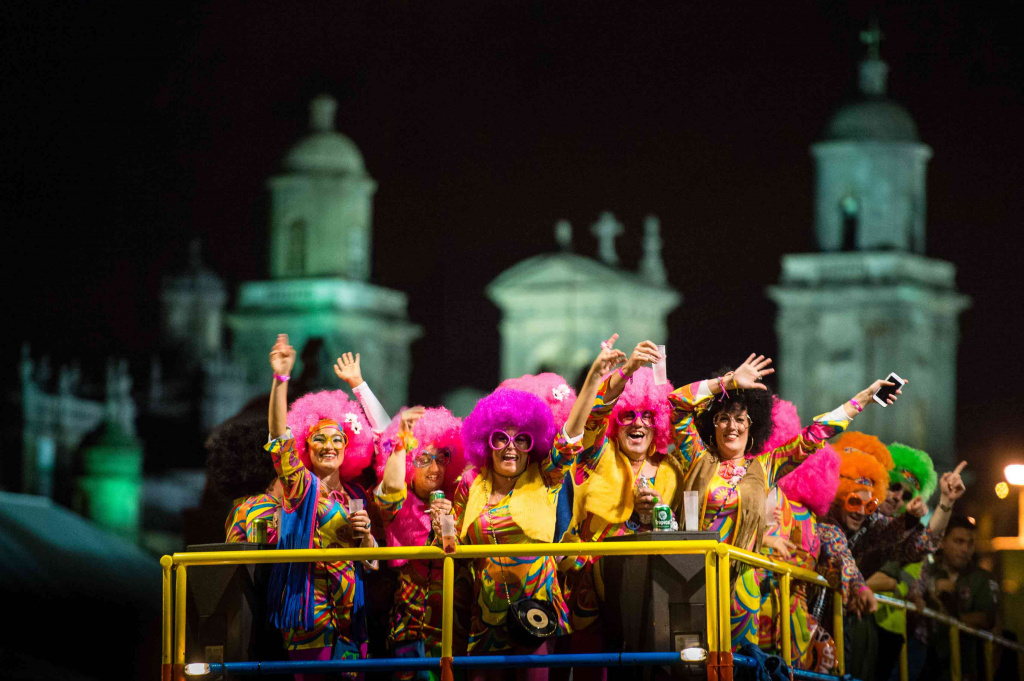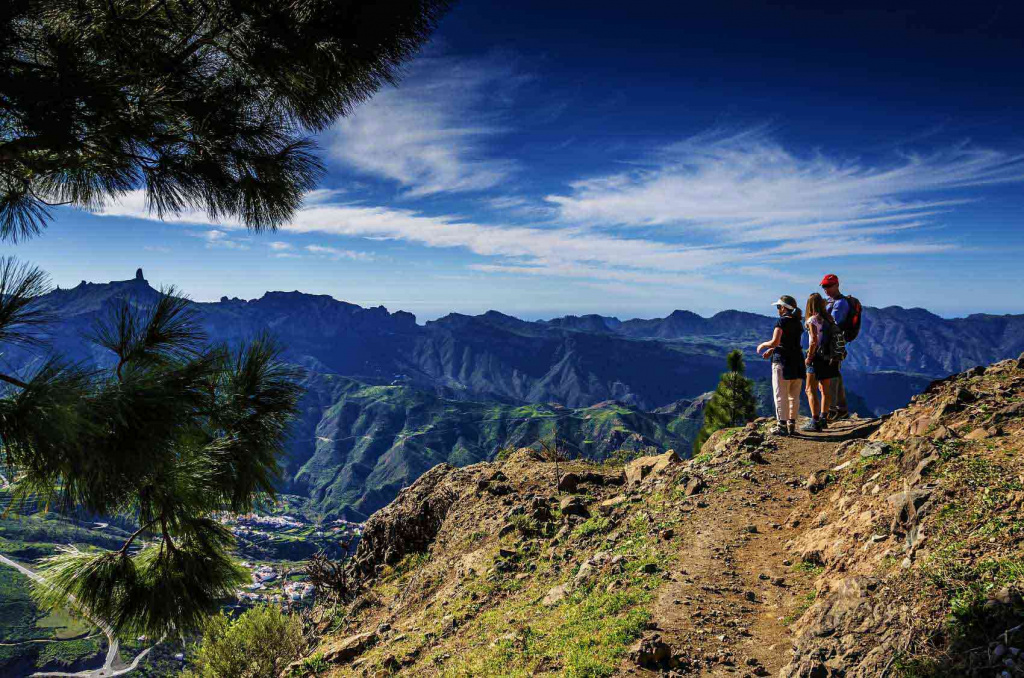Thanks to its history as a crossroads in the transcontinental trade, Gran Canaria reflects a melting pot of a broad variety of people, nations and cultures: not only European or Latin-American, but also North African and aboriginal origins. It is considered one of the most spectacular enclaves of the entire European continent.
What to see and do in Gran Canaria?
Gran Canaria offers an almost magical set of activities, varied destinations, and a choice of local culture or sophisticated nightlife. The island also boasts a rich and varied gastronomy thanks to its historical past as a shipping midpoint between different continents, countries and cultures.
Known worldwide as “the miniature continent,” it owes its name to the diverse landscapes and varied microclimates that can be enjoyed in a single day.
The best beaches of Gran Canaria: variety is the spice of life.
Gran Canaria boasts a broad variety of beaches, ranging from family coves, solitary beaches in remote enclaves, and pristine wilderness areas, as well as sophisticated beaches abutting urban areas.
If you visit the northern beaches, you will find small, black sand beaches formed by volcanic rock, pummeled by the ocean until the native basalt was ground into a silky-fine black sand. The northern beaches are unspoiled areas, combining beauty and wild nature in equal measure.
The beaches in the southern part of the island, on the other hand, have calmer waters and golden sand. These beaches tend to be larger, boasting nearby amenities and many conveniences.
Playa de Maspalomas: a classic that improves with time.
Reserva Natural de las Dunas de Maspalomas is the best-known beach, famous for its rolling dunes, clean coastline and deep blue ocean. It is a natural space comprised of three different ecosystems: the pond, the dunes, and the palm grove. The area is perfect for sunbathing, walking, or for children who need space to run and play.
Visible from any point of the beach stands the old lighthouse dating from 1890, which served as a beacon for the busy trade routes between America and Europe.
Playa de Amadores: nature and tranquility.
If you prefer beaches with crystal clear waters and extremely fine sand, your ideal destination is Playa de Amadores. This beach has fine white sand and very calm water because it is located between two dykes that protect it from the open ocean, making it almost a natural pool.
It is the perfect destination for people with reduced mobility or those who prefer a sheltered environment away from the waves.
Anfi del Mar: calm and relaxation.
Anfi del Mar is a natural lagoon, protected by a breakwater and a natural island. The beach boasts calm waters and very fine sand. It’s the ideal destination for those who want a sheltered atmosphere or those with small children.
This beach provides all kinds of services, surrounded by supermarkets and restaurants to round out your day.
Playa de las Canteras: urban and wild.
If you prefer a cosmopolitan environment, Playa de las Canteras is located in the city of Las Palmas. Protected by a natural reef, this golden-sand beach provides both natural charms, as well as services for the discerning beachgoer. Enjoy a day soaking up the sunlight, and then step off the beach to find a broad range of restaurants, terraces, stores, ice cream parlors and other amenities.
Gran Canaria: more than just its beaches.
Gran Canaria is famous, not just for its beaches, but also for its hamlets, villages and cities. Here you will meet a broad variety of people, descended from adventurers who traveled to this island in both the ancient past, and also in more recent times, first on sailing ships, and then ships powered by steam. Visiting Gran Canaria is like stepping onto the set of a movie, where you enter a series of villages where tranquility, peace and the very concept of “time” become a new dimension.
Journey inland to the mountain town of Tejeda, rated one of the most beautiful villages in Spain, and then continue onward to Artenara, a picturesque hamlet surrounded by lush pine forests, where you can ascend to its highest parts to view practically the entire island.
Following our route through the most famous villages on the island, don’t miss the wonderful historic centers of Santa Lucía or Fataga for picturesque images, complete with lush palm groves, and the classic white houses typical of rural architecture on Gran Canaria.
Gran Canaria: gastronomical delights.
Don’t leave the island without indulging the pleasures of the palate! Here are some famous local dishes worth mentioning:
El Gofio (ground cereals) is a traditional staple on Gran Canaria. Traditionally ground from toasted corn, but also wheat, barley, or other seeds and grains, Gofio can be served as a porridge, a side dish (think polenta), or a variety of other ways. We recommend trying it scalded, kneaded into bread, sprinkled on desserts or presented as a delicious mousse.
Papas con mojo (potatoes) are star products of Canarian cuisine. Best known as “papas arrugadas con mojo” (wrinkled potatoes with mojo sauce), this dish is traditionally boiled in seawater until the water evaporates, leaving a lightly salted potato, Papas con mojo can be eaten as an appetizer, accompanied with coriander or red bell pepper, or as a side dish.
And one must, of course, sample the fish, meats and cheese of Gran Canaria! Thanks to its location in warm Atlantic waters, the island boasts a broad variety of exotic fish and varied presentations, including octopus, squid, parrot fish, sama roquera (red-banded seabream), and of course one of its greatest delicacies, “lapas a la plancha” (grilled limpets).
Among its meat dishes we highlight “costillas de cerdo con piña de millo” (pork ribs with pineapple millet) and “Cochino Negro” (black pork). And don’t forget its most famous delicacy, “sobrasada Canaria” and “chorizo de Teror” (cured sausage and spreadable chouriço).
Tour Gran Canaria through its museums and archeology.
While Las Palmas hosts the largest number of museums, most destinations on the island maintain local museums highlighting local history and culture, as well as local art, craftmanship, natural history, and local flora and fauna.
Museo Canario
Museo Canario (Canarian Museum) was formed in 1879 by local patrons to preserve the island’s scientific and cultural character. It boasts an extensive collection highlighting the aboriginal population of Gran Canaria. It also contains many terracotta figures and vestiges of the Canarian past.
Museo Canario also contains an important documentary archive, with more than one million copies of newspapers and magazines from different periods.
Casa Museo de Colón
Casa Museo de Colón (the Columbus House) was conceived as a center in which to study, research and disseminate the history of the Canary Islands and its extensive interaction with the American continents. Casa de Colón houses a specialized study center, as well as spaces dedicated to different types of events such as exhibitions, concerts and all kinds of cultural events.
Casa de Colón is also a museum and, of course, a library, where you can find all kinds of materials, including original artifacts related to the history of Columbus and his parallelism with the Americas.
CAAM-Centro Atlántico de Arte Moderno
Centro Atlántico de Arte Moderno (Atlantic Center of Modern Art) forms the epicenter of Gran Canarian culture. Here you will find exhibitions of artists from different countries, including the old continent, as well as the Americas, and also Africa.
This center provides a full sensory experience that you will enjoy through its different sections and offers, ranging from concerts, conversations with eminent art stars, spaces for leisure and culture, to creative meetings.
In addition to all this, Centro Atlántico de Arte Moderno has a library with more than 60,000 records, satiating the curiosity of students and researchers about any subject in the art world, including film, design, theater and other topics.
Exploring Gran Canaria through its archaeological wonders.
One shouldn’t leave the island without exploring Montañas Sagradas (sacred mountains) and Risco Caído. Declared a UNESCO World Heritage Site in 2019, you can explore numerous troglodyte settlements, including Risco Caido, a series of 21 caves, as well as two sacred sites containing cave paintings, and an astronomical observatory, which the Canary-Amazigh people settled at the beginning of the common era.
Moving north, you will find Museo y Parque Arqueológico Cueva Pintada de Gáldar (Museum and Archaeological Park Cueva Pintada de Gáldar), which preserves extensive rock-art of pre-Hispanic origin, surrounded by a village with more than 50 houses and artificial caves.
And if you wish to capture one of the most spectacular snapshots on Gran Canaria, be sure to visit the Guayadeque ravine, located southeast of the island. It’s an extensive ravine with many caves that were home to the first settlers of the island.
Gran Canaria offers spectacular nightlife.
Gran Canarian nightlife offers, both in quality and quantity, an endless number of pubs, bars, discotheques, clubs, casinos and beach bars for all kinds of public, trends and leisure. Enjoy its cosmopolitan atmosphere, different people, cultures and styles, on many terraces and moving around Plaza de España and Avenida de Mesa y López.
Another popular nighttime destination is Las Canteras, a leisure area with concerts on the beach, as well as shoreline terraces, practically right on the beach.
There are weekend and midweek walks and different types of routes, including the “Ruta de la tapa” on Thursday night.
If you prefer discothèque, the south of the island provides the most purely disco atmosphere, with lots of venues and pubs. We’d like to highlight Playa del Inglés, which frequently becomes the epicenter of the night party, and the big shopping centers of Gran Canaria.
Hotels, rural houses, apartments: where to stay in Gran Canaria?
There’s a broad range of accommodation on Gran Canaria, including rural houses and hotels scattered throughout the island. If you seek a few days to disconnect, you can also enjoy small spiritual retreats where you can forget about the world, stress, cell phones and emails among ancient vegetation, ravines and hidden places.
If you’d prefer a package that includes flight and hotel at a good price, we recommend you visit the Logitravel website. It is easy to navigate, there are very good offers, and you can choose between all inclusive, half board, etc…
Find best hotel deals in Gran Canaria:
Start by taking a virtual tour:
Imagine traveling through magical laurel forests covered with moss and mystery (perhaps visit Lothlorien?); walking through pine forests located more than 1,500 meters high; and being able to see the clouds beneath your feet, all within the space of a single day. Now picture, while taking this magical journey, you are surrounded by crystal clear waters and sinuous golden dunes.
Start enjoying your trip by watching this video of Gran Canaria:
Are you looking for a cheap rental car?
Routes, activities and excursions in Gran Canaria:

